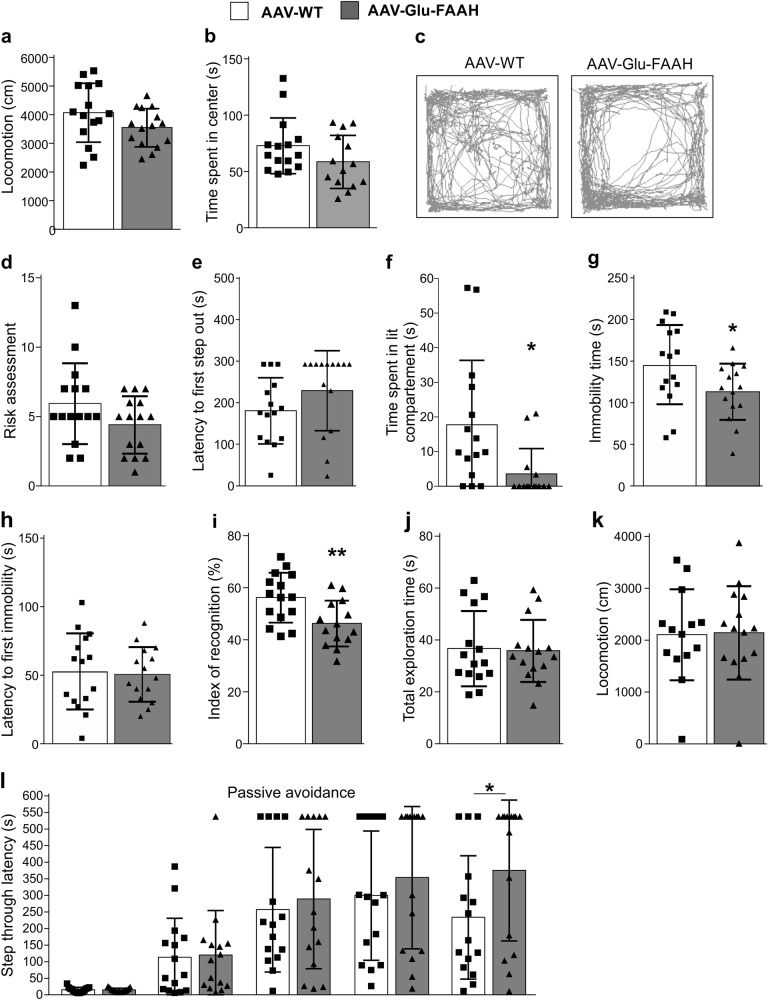Fig. 5.
Effect of FAAH overexpression on anxiety-like behavior and memory formation. a Animals tested in the open field test showed equal locomotor activity, although (b) AAV-Glu-FAAH mice tended to spend less time in the center than AAV-WT mice. c Representative movement pattern of individual mice exposed to the open field, showing a center-avoiding behavior in AAV-Glu-FAAH mice. d In the light dark test, AAV-Glu-FAAH mice showed unaltered risk assessments, (e) no change in latency to first step out, and (f) a decrease in time spent in the lit compartment. g In the forced swim test, AAV-Glu-FAAH mice were less immobile compared to control, whereas (h) the latency to first immobility was unchanged. (i) Spatial memory was assessed by the spatial object recognition test. AAV-Glu-FAAH mice showed a decrease in the index of recognition, while (j) total exploration time and (k) locomotor activity were not affected. (l) In the fear-motivated avoidance task AAV-Glu-FAAH mice displayed equal memory acquisition (first two bars), and equal step-through latencies 1 h, 24 h and 1 week after conditioning, but a significant increase in the step-through latencies 2 weeks after conditioning (last two bars). n = 15 mice per group. *p < 0.05, **p < 0.01, Student´s t-test and two-way repeated measures ANOVA with Sidak’s multiple comparison test. Values are expressed as means ± SEM. Statistical analysis details are reported in Supplementary Tables S2 and S4.

